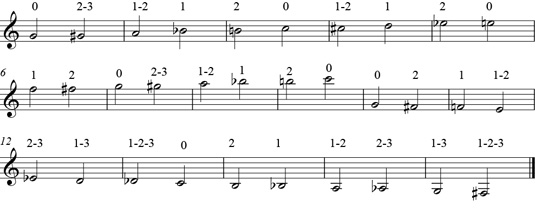Easy Trumpet Sheet Music With Finger Chart
Trumpet For Dummies Cheat Sheet
Of course, when you have a trumpet and mouthpiece, you need to know how to take care of them so that they last a long time and stay in good working order. Finally, you need a map for your journey, so a fingering chart is essential information, telling you which of those three valves you need to push down for the notes you want to play.
Getting a trumpet and mouthpiece
First, the basics: Many kinds of trumpets, and cousins of trumpets, are on the market, but you're looking for a B♭ (B-flat) trumpet. In North America, you want piston valves (many European players use rotary valves).
If you're shopping for a first trumpet for a young child, you may want to consider a cornet; the tubing of a cornet is wrapped more tightly so that the weight is distributed differently and the balance is more comfortable for small hands.
Even though you know what kind of trumpet you want, your choices aren't over. When you walk into a music store to buy a trumpet and mouthpiece, you have to make several decisions:
-
New or used? The decision whether to buy new or used is often a matter of budget. A new trumpet is a safer bet, if you can afford one. But don't discount used trumpets or feel discouraged if you can't afford to buy new. A used trumpet can be a real bargain — the trick is to find one that's in good condition. You improve your odds by buying from a music store or from someone you know and trust.
If you've found a used trumpet you're considering, bring a trusted teacher or advisor with you to examine and play the instrument, if you can. If that's not possible, at least make sure that the valves go up and down smoothly and that there are no obvious dents or actual holes in the metal.
-
Student model or professional model? Start with a student model and upgrade to a professional one down the road, after you've decided to continue playing the trumpet. In the student lines, Yamaha YTR 2335, Bach TR 300, and Getzen 390/490 are all excellent makes. If you're buying used, an older trumpet called the Olds Ambassador is another great option.
If you're shopping for a professional model, both Yamaha and Vincent Bach Stradivarius are good choices. You'll see so-called "intermediate" trumpets on the market; they cost more than student models but aren't as good as professional ones; you're better off going either with the student or the professional, and skipping the intermediate model altogether.
-
What finish? Most student trumpets have lacquer finishes, which is no coincidence: Lacquer is the least expensive finish. Silver plate is popular with advanced players and professionals, but it adds up to $200 to the price. Gold plating is even more expensive and uncommon, even among professionals.
-
What type of mouthpiece? If you buy a new trumpet, the mouthpiece will come with the trumpet. If you buy used, you'll need to buy a mouthpiece separately. Make sure you get a medium-size mouthpiece, meaning that the diameter of the inner rim and the depth of the cup are in the middle of the range of choices. A Bach 7C is the standard make and size for a beginning trumpet student. The equivalent in Yamaha is an 11C4-7C.
Taking care of your trumpet
Trumpets are pretty easy to look after, and mouthpieces even more so. All you need are oil, slide grease, and a lint-free cloth to care for your musical equipment.
-
Oiling the valves: A new trumpet has a breaking-in period of about a month during which you should oil the valves and give the valves an oil change more frequently. During the first month, you should oil the valves every day. To do this, apply just two drops of good-quality valve oil (Hetman Synthetic Classic Piston Lubricant, Al Cass Fast Valve Oil, or Holton Valve Oil) on the silver section of the valve.
In addition, once a week, do a full oil change: Carefully remove the valves and wipe them clean with a lint-free cloth; apply no more than three drops of valve oil on the silver section of the valve, and insert the valve into the casing, tightening the retaining cap without too much force. Work on one valve at a time.
After the first month or so, oil your valves two or three times a week; if you're playing several hours a day, you might want to oil them daily. Every couple of months, give your valves an oil change.
-
Greasing the slides: Lubricate the main tuning slide with slide grease. (Hetman and Yamaha are two excellent manufacturers.) Don't apply too much lubricant, and only do this maintenance once a month. The goal is for the slide to move smoothly, but not too freely. The third-valve slide does need to move easily, so a different, lighter lubricant (called key and rotor oil) is needed.
-
Cleaning the mouthpiece: Mouthpieces are simple. Swab the inner diameter with a mouthpiece brush whenever you think of it.
Your trumpet fingering chart
Here are the fingerings for the notes you'll be playing on your trumpet for at least the first few months. The first valve is the one closest to you, the second valve is the middle one, and the third valve is — you guessed it — the one farthest from you. The notation "0" means no valves at all.

About This Article
This article is from the book:
- Trumpet For Dummies ,
About the book author:
Jeffrey Reynolds, PhD, is a lecturer in music at the University of Toronto. A trumpet player with almost 50 years' experience, he has performed all manner of engagements, from funerals to weddings, from jazz gigs and dances to orchestra concerts.
This article can be found in the category:
- Trumpet ,
Source: https://www.dummies.com/article/academics-the-arts/music/instruments/trumpet/trumpet-for-dummies-cheat-sheet-208794/